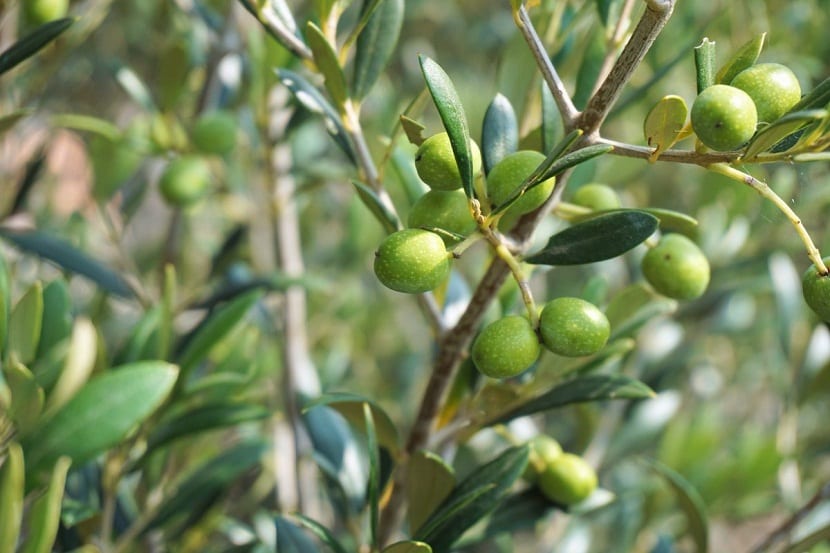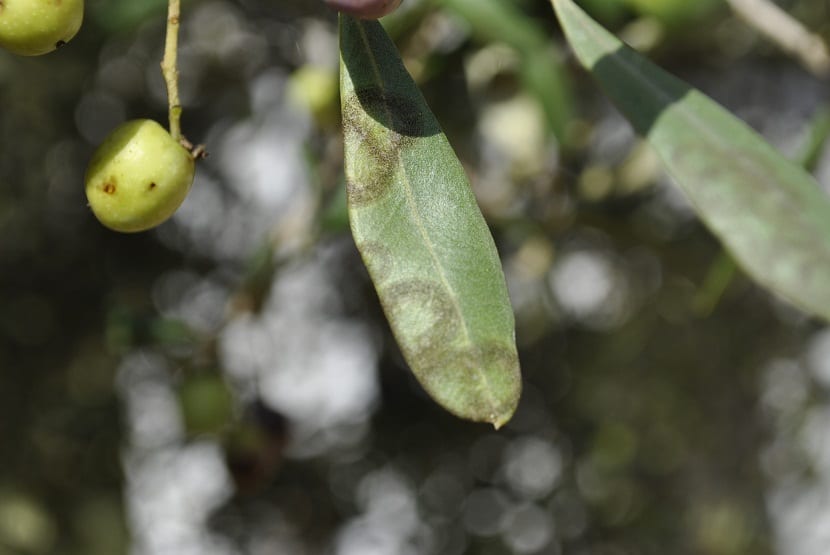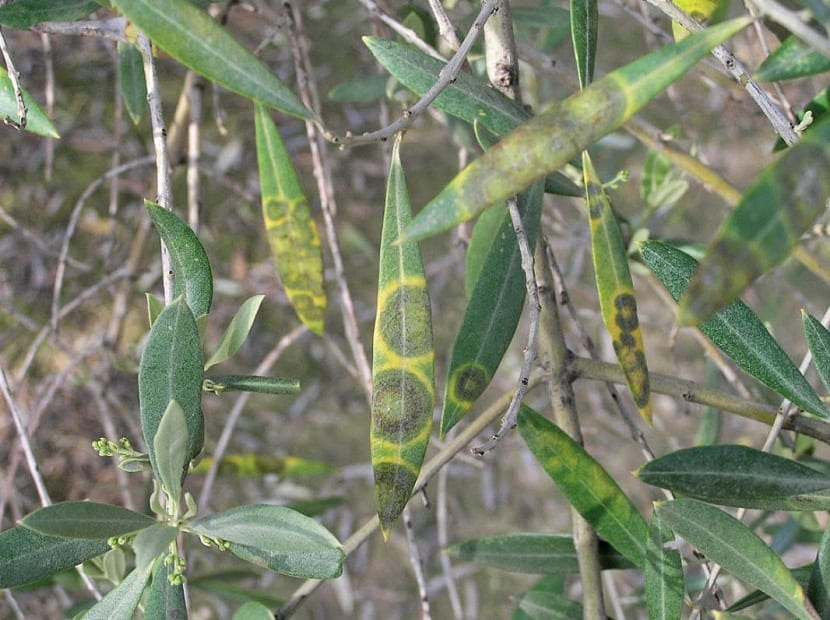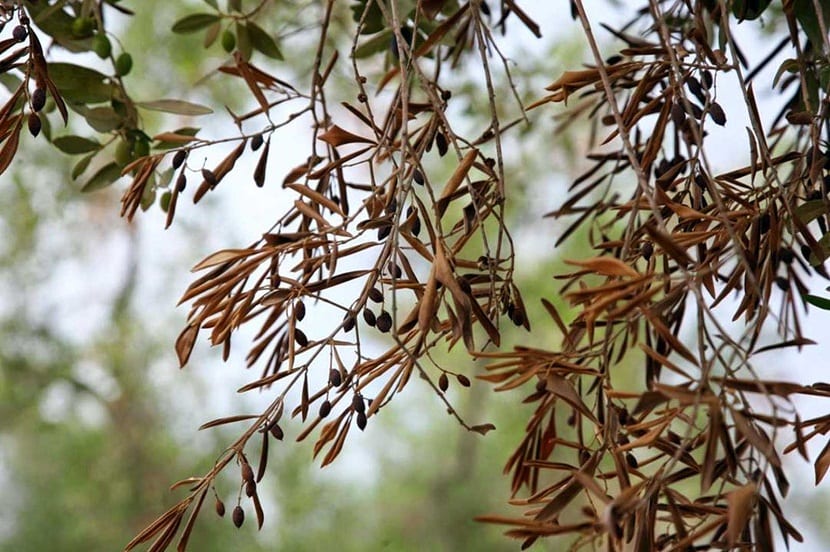
The olive tree is a tree traditionally cultivated within the hottest areas of Europe, which has a highly valued fruit because it comes from the oil of olive, highly appreciated and even indispensable within the Mediterranean diet and kitchens.
It is possible that the diseases of the olive tree cause its yield to be significantly reduced, regardless of whether it is the traditional olive grove, the intensive or the super-intensive, which is a risk to the life of the tree upon reaching its most severe stages. That is why in this article we are going to talk about the main diseases that affect the olive tree and how to treat them.
I repeat

It stands out for being possibly the most severe disease that an olive tree can present. It causes premature defoliation of the tree, which directly affects its production and makes it weak, in addition to causing injuries to its leaves, and in some cases, it even affects the fruits and their stems or peduncles.
In this case, the fungicidal treatments They are usually the only ones that offer an effective result in order to keep the repilo under control, although performing selective pruning, removing diseased leaves and applying fertilizers without nitrogen, reduce the risk of infection, since in case of developing this disease, it would not become very severe.
Gills or tumors of the neck
It is a disease caused by Agrobacterium tumefaciens, a b It usually affects younger trees. To avoid it, it is essential try that the olive tree does not have wounds, since this disease is usually spread in this way by allowing the bacteria to infect and attack the olive tree.
Most the treatments used to fight this bacteria they are not usually effective, so that the most convenient thing is to prevent the tree from being infected by keeping it in optimal condition and avoiding any possible injury.
When the olive tree is already very infected, it is best to uproot it.
Olive tree prays
It consists of a pest that synchronizes very well with the olive tree, since it feeds on it for three generations per year: antóphaga, carpophaga and philosopher. Throughout these generations or stages, this pest feeds on the leaves, flowers and fruit of the tree.
There are various insecticidal treatments that help keep the olive moth under control, however, the ally for those farmers who must combat the Prays are usually the high temperatures summer.
Olive tree verticillosis

It is a disease caused by the presence of a soil fungus, which has a really complicated treatment. Nowadays, it is necessary to use very resistant varieties and / or rootstock in order to replant those olive groves that are infected.
The oldest leaves tend to deform and wilt taking a yellowish tone and then fall, since despite originating from the root, this mushroom advance through the tree stunting it down to its branches, leaving them weak and dry. Treatment for verticillosis consists of hiring specialists to perform a biologic control, for example: biofumigation, which is the application of fresh organic matter, which when decomposed, attacks microorganisms.
In addition, certain treatments such as solarization, which is basically about using plastics to cover the floor, and allow it to obtain a certain temperature, light and humidity.
Xylella fastidiosa
Consists in a bacterium that possesses immense pathogenic potential, it is transmitted naturally between plants due to the action carried out by multiple insects, which act as vectors of the disease, so the control of Xylella fastidiosa is usually extremely complex.
Although there are currently no real treatments to combat this bacterium, certain Italian olive varieties are known to support the presence of Xylella Fastidiosa.
Lead sickness
It is possible to ensure that the olive tree presents this disease, when it has yellow and brown spots with irregular shapes. This is a not very recognized disease, which in many cases is confused with the repilo, although in this case a gray color and a silver tone can be seen on the back of the leaves.
Its main treatment is usually use of fungicidesHowever, some measures such as the use of fertilizers without a high nitrogen content, selective pruning and the elimination of diseased leaves, allow reducing not only the incidence of lead disease, but also its severity.
Soapy olive

It is a disease that causes the appearance of circular brown spots in the lower part of the fruit of the olive tree, which is caused by the presence of a fungus known as Colletotrichum.
These stains expel an orange and gelatinous liquid that causes the fruit to rot and fall from the tree or remain mummified in it. It is equally possible that it affects the branches, causing them to dry out and not give new shoots.
Its treatment consists of applying copper sulfate solutions preventively only when it is a risk area. Likewise, they must apply cupric sulfates during the fall and winter, since in these times the humidity and the temperature are usually conducive to their proliferation.
You also have to carry out burn and sweep of those parts of the tree that fell to the ground, in order to prevent the fungus from remaining dormant.
Olive fly

It is known to be one of the pests that affect with greater frequency to this type of trees, regardless of whether they are traditional, intensive and / or super intensive olive trees.
When applying the treatments, it is necessary to take into account that certain varieties of olive tree tend to be much more sensitive to the attack of this pest.
The use of traps on these trees It is a very effective method to control the first generations of this pest, likewise, it is necessary to apply copper treatment especially in those areas where more humidity usually accumulates and in which they are less aerated. Nevertheless, it is essential not to abuse copper because it could also kill other fungi that are useful for the life of the olive tree.